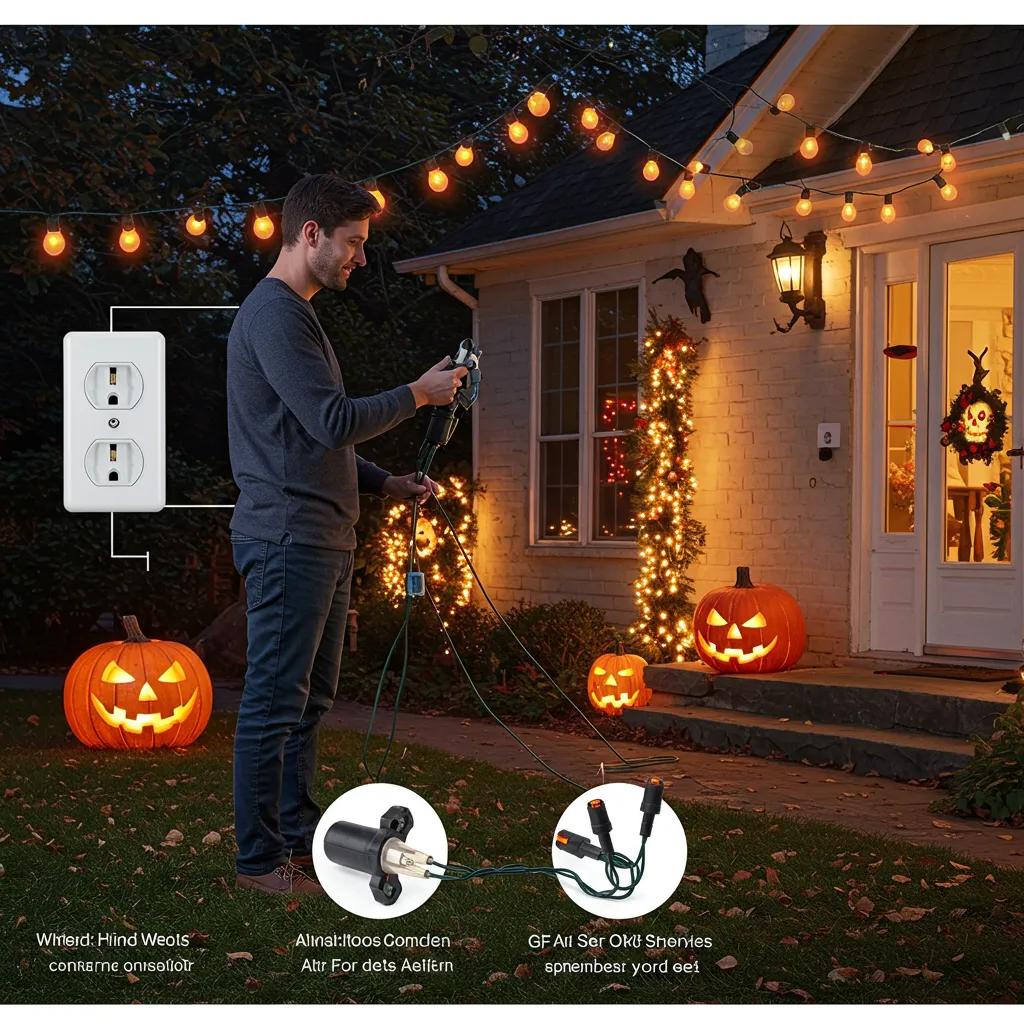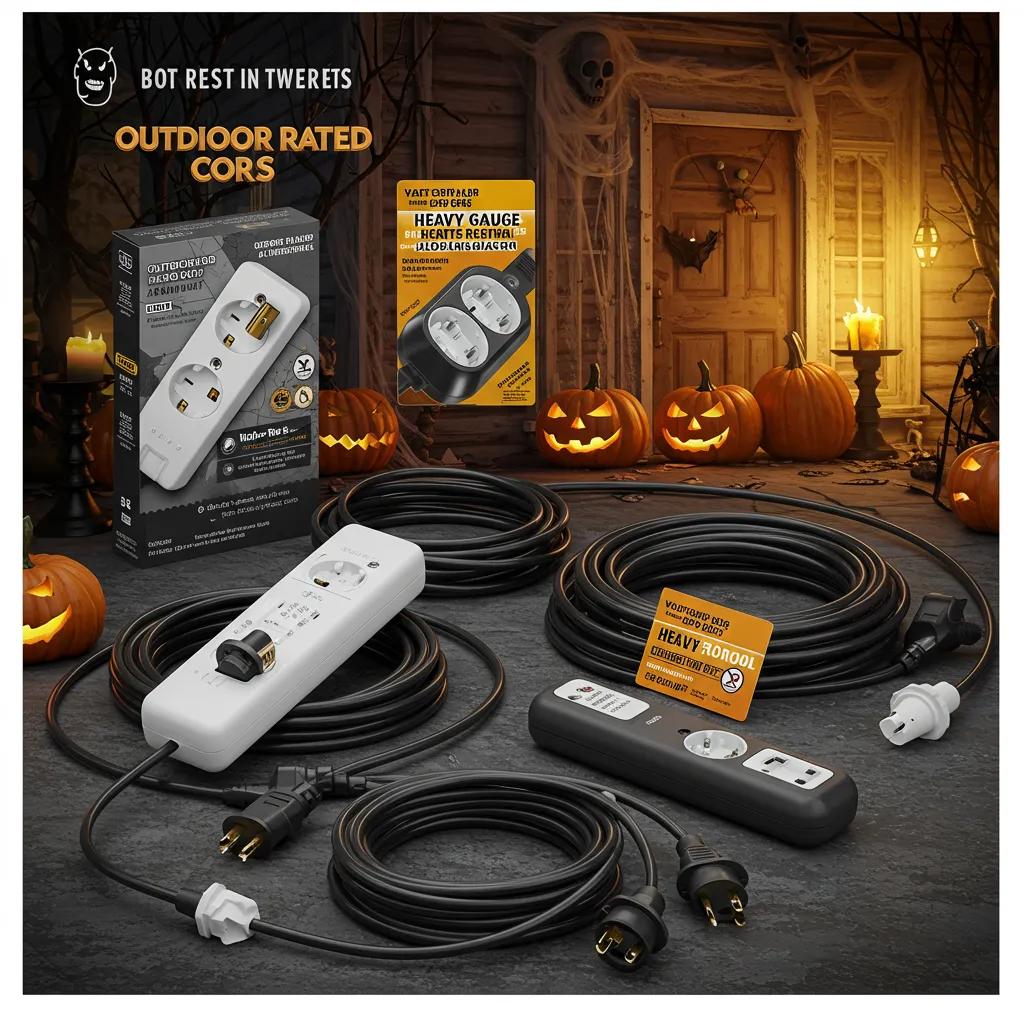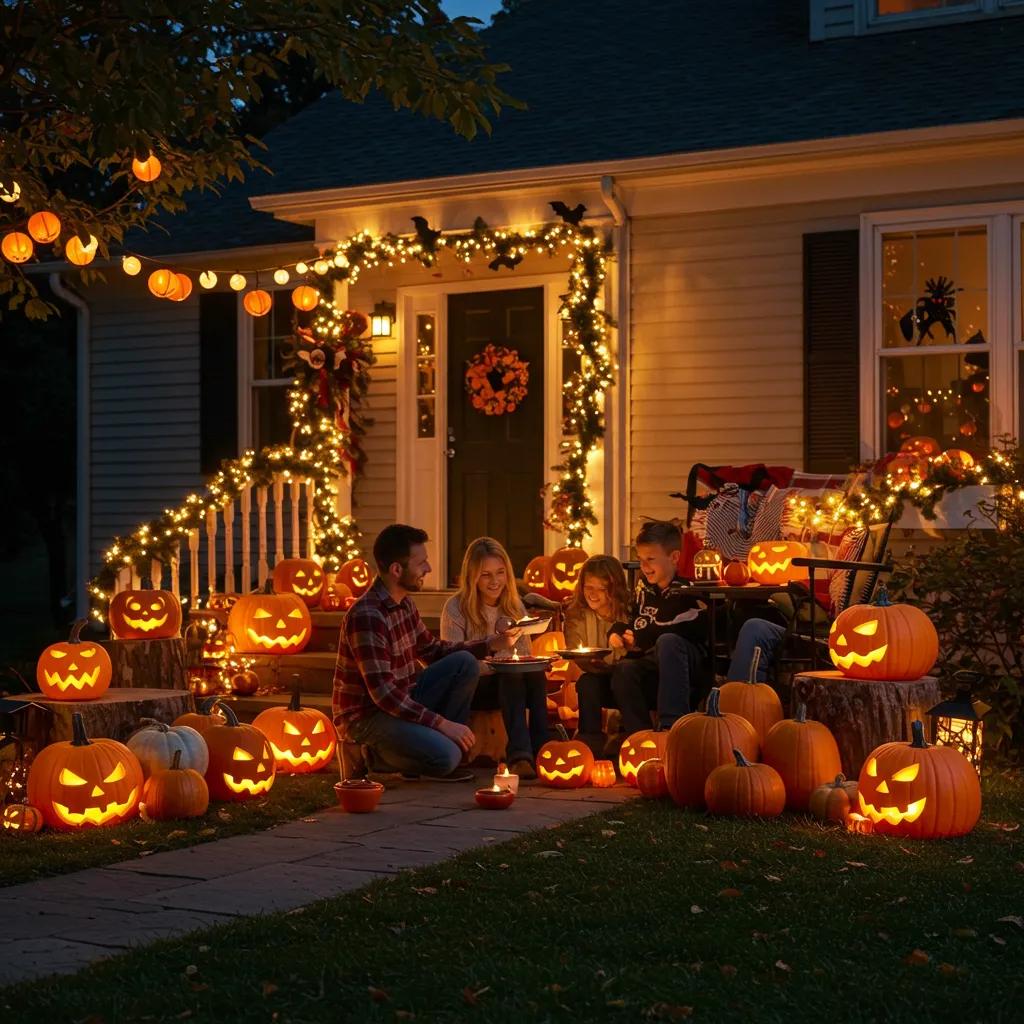Don’t Get Spooked by Flickering Lights: Essential Halloween Electrical Safety Tips for Lexington Homes
Flickering lights during Halloween signal more than a spooky atmosphere — they often indicate electrical issues that can escalate to shocks or fires if ignored. This guide shows Lexington homeowners how to diagnose flickering lights, set up safe outdoor Halloween lighting, and reduce Halloween electrical hazards using targeted troubleshooting and practical prevention steps. You will learn the common flicker causes, step-by-step checks to isolate problems, extension cord safety rules, fire-prevention tactics like choosing UL listed Halloween lights or battery alternatives, and where to find local resources in Lexington. The article maps five core areas: causes and troubleshooting, outdoor installation best practices, extension cord selection and inspection, preventing electrical fires, and Lexington-specific resources including community initiatives. Read on for clear, actionable steps to protect your home, preserve decorations, and gain peace of mind while keeping trick-or-treaters safe this season.
What Causes Flickering Lights on Halloween Decorations?
Flickering lights on Halloween decorations are intermittent brightness changes caused by electrical interruptions, loose contacts, overloaded circuits, faulty bulbs, or voltage drops, and identifying the mechanism quickly reduces risk. Diagnosing the cause improves safety by directing immediate fixes like unplugging, reducing load, or replacing components. The following bulleted list highlights common causes and one-line remedies for quick reference and featured-snippet optimization.
- Loose connections: Tighten plugs and sockets to stop intermittent contact.
- Overloaded circuits: Reduce the number of lights or move loads to another circuit.
- Faulty bulbs or drivers: Replace bulbs or the affected string to restore stable output.
- Voltage drop over long runs: Shorten runs or use higher-gauge wiring to prevent dimming.
Use this quick checklist to prioritize actions before deeper troubleshooting and to decide if professional help is needed.
This troubleshooting table helps homeowners match observable symptoms to practical fixes and know when to cut power and call an electrician.
How Do Loose Connections Lead to Flickering Lights?
Loose connections produce intermittent electrical contact that causes visible flicker and can generate heat or arcing, increasing fire risk. Inspecting plugs, sockets, and bulb bases locates looseness quickly by performing a gentle wiggle test and observing changes in light behavior. If you smell burning or see sparks, immediately unplug the decoration and avoid reuse until a proper repair or replacement occurs. Tightening or replacing the damaged connector often restores safe operation, but persistent arcing signals the need to call a licensed electrician.
Can Overloaded Circuits Cause Halloween Light Flicker?
Overloaded circuits occur when combined wattage of lights and inflatables exceeds circuit capacity, causing voltage fluctuation and flicker across devices. Estimate load by summing wattage of connected items and comparing to typical 15A circuit capacity (~1,800 watts); using LED lights cuts load significantly. Redistribute decorations across multiple circuits or unplug high-wattage items to reduce stress on a single breaker. Persistent trips or widespread flicker after redistribution indicate panel or wiring issues that require professional assessment.
What Role Do Faulty Bulbs and Voltage Drops Play?
Faulty bulbs or LED driver failures create localized intermittent output and visible flicker in a single string or fixture, whereas voltage drop causes gradual dimming and flicker toward the end of long runs. Swap suspected bulbs with known-good spares to isolate bulb-related failure quickly and replace faulty strings when necessary. For long runs, use outdoor-rated transformers or shorter segments to maintain voltage and prevent uneven brightness or flicker. Properly rated equipment reduces the chance that a single component will undermine the whole display.
When Should Lexington Homeowners Call a Professional Electrician?
Call a licensed electrician when you encounter smoke, sparks, persistent arcing, repeated breaker trips after simple fixes, or wiring that feels hot to the touch, as these are red flags for hazardous faults. An electrician will inspect panel load, branch circuits, grounding, and connections, and can recommend upgrades like dedicated outdoor circuits or GFCI-protected outlets to improve safety. Before the pro arrives, cut power to affected circuits and remove flammable materials from the area. Prioritize professional help whenever troubleshooting does not eliminate flicker or reveals evidence of overheating.
How Can You Safely Set Up Outdoor Halloween Lighting in Lexington?

Safe outdoor Halloween lighting balances rated equipment, protection from moisture, and secure placement to prevent shocks and trip hazards; this approach reduces Halloween electrical hazards and preserves decorations. Use outdoor-rated light strings, weatherproof connectors, and ensure every outdoor outlet is GFCI protected to guard against ground faults. The following numbered list outlines practical setup steps that homeowners can follow while accounting for typical Lexington weather and yard conditions.
- Choose outdoor-rated lights and cords labeled for wet/damp locations.
- Plug lights into GFCI-protected outlets and test/reset before use.
- Weatherproof all connections with rated covers or silicone seals.
- Route cords along edges and secure them with outdoor-rated fasteners.
Why Use Outdoor-Rated Lights and Extension Cords?
Outdoor-rated lights and extension cords carry wet-location or outdoor labels that indicate insulation, connectors, and components resist moisture and temperature changes. Using UL listed or manufacturer-marked wet-location products prevents water ingress that can short circuits, corrode contacts, and cause insulation failure. Indoor-only products lack protective jackets and can degrade quickly when exposed to dew or rain, increasing shock and fire risk. Choosing properly rated gear is the first defense against outdoor electrical hazards.
UL Listed Materials for Halloween Electrical Safety
To minimize these hazards, only tested and approved material recognized by testing UL laboratories should be used. Equipment should be sized according to the safe electrical circuits
How Do GFCI Outlets Protect Against Electrical Hazards?
GFCI (Ground-Fault Circuit-Interrupter) outlets detect differences in current between hot and neutral and trip within milliseconds to prevent shock if current leaks to ground. Test GFCI outlets monthly by pressing ‘Test’ and restoring with ‘Reset’ to ensure reliable operation before plugging in decorations. GFCI protection is essential for extension-cord hooked displays and any outlet exposed to moisture. Relying on GFCI reduces electrocution risk while maintaining functional outdoor lighting.
What Are Best Practices for Weatherproofing Electrical Connections?
Weatherproofing uses purpose-built materials like in-use outlet covers, weatherproof connectors, and silicone to repel water without creating heat traps that could cause overheating. Elevate plugs off the ground and avoid placing connectors in puddles; where necessary, use sealed junction boxes rated for outdoor use. Avoid wrapping connections tightly in non-breathable tape that can trap heat; instead choose rated solutions designed for outdoor temperature cycles. Proper weatherproofing extends equipment life and reduces fault-induced flicker.
How Should You Secure and Place Outdoor Cords Safely?
Secure cords along house edges, under mats or through cord covers for walkways, and fasten with outdoor-rated clips that do not pierce insulation to prevent abrasion. Avoid pinching cords in doors or windows and never run cords under combustible materials or through high-traffic areas without protection. Use reflective tape or low-profile covers where cords cross pathways to keep them visible and reduce trip hazards. Good routing practices preserve cord integrity and reduce the chances of damage that causes flicker.
Why Is Avoiding Overhead Power Lines Important?
Overhead power lines pose electrocution and arcing hazards when using ladders or stringing lights at height; maintain a safe distance and never attempt to work near lines without professional tools or support. Electrocution can occur without direct contact if conductive decorations or tools come too close, and arcing can ignite nearby materials. Use insulated tools, spotters, or hire professionals for tall installations. For any work near overhead lines, prioritize safety and professional assistance.
What Are the Best Extension Cord Safety Tips for Halloween Decorations?

Extension cord safety for Halloween decorations centers on matching cord gauge to load, using outdoor-rated cords, inspecting for damage, and avoiding daisy-chaining to prevent overloaded outlets and voltage drop. Proper cord selection reduces overheating and prevents overloaded outlets Halloween scenarios. The checklist below gives quick dos and don’ts to apply while setting up seasonal displays.
- Use outdoor-rated cords sized for the cumulative wattage and length required.
- Don’t daisy-chain cords; use a single appropriately gauged cord or add circuits.
- Inspect cords before each use and retire damaged cords immediately.
- Keep cords out of walkways or protect them with covers to prevent trips.
How Do You Select the Right Extension Cord for Halloween Use?
Select an extension cord by matching AWG gauge to length and expected amperage: shorter runs can use thinner gauges while long runs require heavier 12–14 AWG cords to avoid voltage drop. Calculate expected load by summing wattage and converting to amps (amps = watts ÷ volts) to choose a cord rated above that current. Prefer cords labeled for outdoor use and check manufacturer guidance for maximum wattage. Choosing the right cord prevents overheating and reduces flicker.
Why Should You Never Daisy-Chain Extension Cords?
Daisy-chaining increases resistance and heat, creating points of failure and substantially raising fire risk, and can also produce voltage drop leading to flicker. Instead, use a single appropriately rated cord or add an outlet/GFCI-protected outdoor circuit closer to decorations. If temporary extension is unavoidable, keep total run length short and check cords frequently for warmth. Avoiding daisy-chaining is a simple rule that prevents common seasonal hazards.
Safe Extension Cord Use for Halloween Decorations
Do not use “octopus plugs,” or splitters, with your extension cords; use only power strips with internal fuses. Shop around for these because the price will range from $5 to $30 apiece.
How Often Should You Inspect Extension Cords for Damage?
Inspect cords before each use and periodically during long displays for fraying, exposed wires, discoloration, or melted plugs; these signs require immediate retirement of the cord. Store cords coiled properly in a dry place and avoid kinks that weaken insulation over time. Regular inspection preserves safety and prevents undetected damage from causing flicker or shorts.
What Is the Proper Placement to Avoid Trip Hazards?
Place cords along edges, behind planters, or under secured covers to minimize crossing walkways; where crossing is unavoidable, use durable cord covers and reflective markers. Secure cords with non-puncturing outdoor clips and keep them visible to pedestrians to reduce accidental snagging. Proper placement preserves both safety and decoration integrity during busy trick-or-treat hours.
When Is Temporary Use of Extension Cords Appropriate?
Extension cords are intended for temporary holiday use, not permanent wiring; if you rely on the same setups yearly, consider installing permanent outdoor outlets to reduce risk. Temporary solutions must use outdoor-rated cords and be inspected each season. For frequent seasonal displays, investing in permanent, code-compliant outlets improves convenience and safety.
How Can You Prevent Electrical Fires During Halloween?
Preventing electrical fires during Halloween relies on using certified decorations, choosing battery-operated options where appropriate, managing loads, and keeping flammable materials away from light sources. These measures collectively reduce ignition sources and lower the chance of decoration-related fires. Below is a concise preventive action list to implement immediately.
- Use UL listed decorations and check wet/damp-location ratings for outdoor use.
- Prefer battery-powered pumpkin lights for porches or fabric props.
- Avoid overloading outlets; distribute loads and use LEDs to reduce wattage.
- Keep dry leaves, paper, and fabric clear of light sources and hot components.
These steps form a layered defense that limits both the chance of electrical failure and the potential for ignition.
Why Is UL Certification Important for Halloween Decorations?
UL (Underwriters Laboratories) testing verifies that components meet safety standards and reduces the risk of manufacturing defects causing overheating or shorting. Look for UL listed markings and manufacturer guidance indicating suitability for wet or damp locations on outdoor lights. Choosing certified products lowers the probability that a decoration will become a fire hazard. Certification is a practical filter to prioritize safe purchases.
Are Battery-Operated Lights a Safer Alternative?
Battery-powered lights eliminate the need for extension cords and outdoor outlets, removing several common electrical hazards and reducing shock risk on porches and near fabric decor. Use fresh, properly sized batteries and avoid mixing old and new cells to prevent leakage or overheating. Battery options are especially useful for pumpkins, wreaths, and indoor displays where cordless operation improves safety.
How Do You Avoid Overloading Outlets and Circuits?
Estimate total wattage of connected decorations and compare to circuit capacity, prefer LED lights that lower cumulative load, and spread high-wattage items across multiple circuits. Use power strips with built-in overload protection only when appropriate and avoid connecting multiple inflatables to one outlet. Consult an electrician if you need additional outdoor circuits or if your panel cannot safely support planned displays.
What Are the Fire Risks of Flammable Materials Near Lights?
Dry leaves, paper, and fabric near heat-producing lights are ignition hazards; even LED lights can cause heat buildup if placed in contact with porous materials. Maintain clearances, use flame-resistant decorations when possible, and monitor older or unknown lights for excessive heat. Keep combustibles away from electrical components to reduce the chance that an electrical fault sparks a fire.
Why Should You Unplug Decorations When Not in Use?
Unplugging decorations before bed or when away eliminates continuous-load risks and removes the chance for undetected failures to escalate into fires. Use timers as a safer alternative to manual unplugging to automate schedules and reduce human error. Consistent unplugging habits are a low-effort, high-impact way to lower holiday electrical risk.
What Lexington-Specific Electrical Safety Resources Should Homeowners Know?
Lexington homeowners should check local building and electrical codes for outdoor wiring rules, verify GFCI requirements, and consult city or county resources for permits or seasonal guidance to ensure compliance with Halloween electrical code Lexington standards. Knowing where to find local electrician resources and community safety initiatives strengthens preparedness. The following numbered list outlines immediate local actions to take when in doubt.
- Search official Lexington municipal or county pages for electrical code summaries and outdoor wiring guidelines.
- Verify license and insurance when hiring a local electrician for holiday installations.
- Check community calendars or local police announcements for safety initiatives and trick-or-treat events.
These steps help homeowners align displays with local requirements and access trustworthy professional help when needed.
What Local Electrical Codes Apply to Halloween Decorations?
Local codes typically require outdoor outlets to be GFCI protected, weatherproofed, and follow specified outlet placement rules; permits may be required for permanent wiring changes. Consult Lexington city or county official pages and look for sections on exterior receptacles, GFCI requirements, and permitted wiring methods. For code-specific interpretation and permit requirements, contact the local code office or a licensed electrician to avoid unsafe or non-compliant installations.
How Can You Find a Trusted Lexington Electrician for Halloween Safety?
Vet electricians by verifying licenses, confirming insurance, asking for references, and requesting written estimates specifying GFCI work or outdoor circuit installation. Ask candidates about experience with outdoor holiday installations and emergency response for seasonal events. A clear scope of work and documented pricing help ensure safe, professional outcomes and reduce surprises.
Are There Community Safety Initiatives for Halloween in Lexington?
Local initiatives often include designated trick-or-treat zones, sponsored safe-house maps, and volunteer patrols organized by neighborhood associations or public safety partners; these programs improve visibility and reduce risks. Check community Facebook groups, local news, and municipal event listings for dates and participation details. Homeowners can support or sponsor events to strengthen neighborhood safety and visibility.
How Can Fleet Wrap Branding Support Local Halloween Safety Awareness?
Fleet wraps can promote safety messaging and community event branding by turning local vehicles into mobile safety billboards that increase awareness without intrusive advertising. Branded fleet vehicles can sponsor safety patrols or appear at community events to amplify messaging, demonstrating how local businesses can align brand visibility with public service. For organizations interested in community engagement, Fleet wrap bookings & brand visibility offer a tangible way to support Halloween safety while raising local profile; consider fleet wrap participation when planning sponsorships or safety campaigns.

